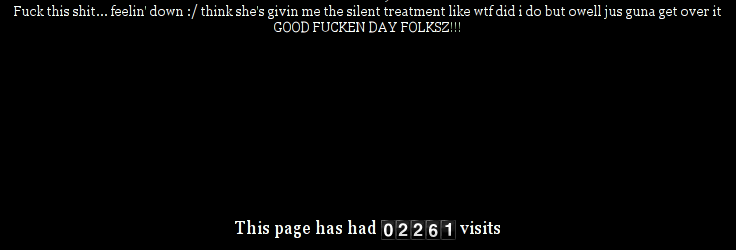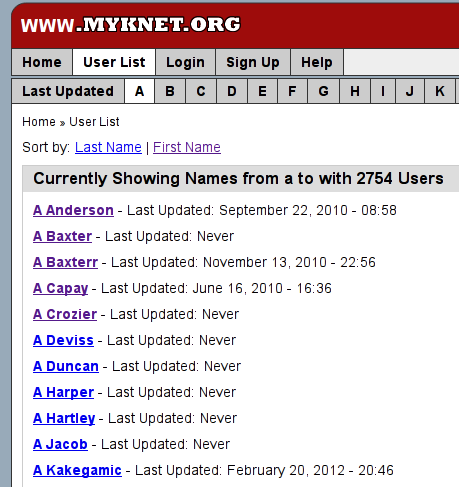

I was happy to present our imaginary social networks and services of 1997 — Once Upon — at Unlike Us, hosted by the Institute of the Network Cultures in Amsterdam.
It was a great event with a truly interested and competent audience. The only problem was that in the end it was mostly about Facebook, even though in The Netherlands Hyves has still more users than Facebook.
That’s why it was very important to see the presentation by Philipp Budka from the Department of Social and Cultural Anthropology at the University of Vienna. He talked about Myknet, an obscure Canadian social network and web hosting service.
A simple alphabetic list of all the users makes it possible to go from account to account. You can also look at the last updated ones and see that there were already almost 400 pages updated today. It is only around 14:00 in Ontario now.
The first impression: Myknet users make their pages in a special way that is obviously influenced by some simple and not strict content management system or a custom made site builder. Would be interesting to get access to it.
Clearly, the pages are made for low resolution displays and slow connections.
The most exciting fact is that they look exactly like classic homepages, but many are used like tweets or status updates. Visually and structurally it is an unexpected mix. See examples on the top of the article.
Many users have moved to Facebook, leaving their facebook badge on Myknet — functioning like classic “this page has moved” notices.
Many accounts are deleted or were only updated in the last decade, which is interpreted like it never happened by the database.
